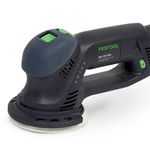Tool Test: Routers for Router Tables
New-breed models spare you the expense of a router lift
Synopsis: Mounting a router in a table gives precise control over a wide variety of work, using bits that would otherwise be too big to use safely, and allowing the use of featherboards, hold-downs, a miter gauge, and other aids that won’t work with a handheld router. With a table-mounted router, you can create moldings on large or small stock, make raised panels using large bits, cut sliding dovetails, and much more. Contributing editor Roland Johnson tested a new generation of routers with a specialized base that promise the convenient above-the-table bit adjustment of a router lift without the expense. He looked at adjustability, bit-changing, collet runout, switch placement, and safety interlocks.
Models tested include Bosch 1617EVS, Craftsman 1617-12, Freud FT1700VCE, Milwaukee 5625-29, Porter-Cable 891, Ridgid R2900, Triton MOF001KC.
From Fine Woodworking #189
Routers are among the most versatile tools in the shop—the go-to gear when you want molded edges on lumber, dadoes in sheet stock, mortises for loose tenons, or multiple curved pieces that match a template.
Routers are no longer just handheld tools. More and more woodworkers keep one mounted in a table. That gives more precise control over a variety of work, using bits that otherwise would be too big to use safely. A table allows the use of featherboards, hold-downs, a miter gauge, and other aids that won’t work with a handheld router. With a table-mounted router, you can create moldings on large or small stock, make raised panels using large bits, cut sliding dovetails, and much more.
Until recently, the best way to marry router and table was with a router lift, an expensive device that holds the router and allows you to change bits and adjust cutting height from above the table.
Now, a new generation of routers with a specialized base threatens to make the router lift obsolete. They promise the same convenient above-the-table bit adjustment without the expense of a separate lift.
After testing seven of these new routers, looking mainly at how handy they are to use, I found that at least one delivers fully on the promise of convenience.
The tools I tested range in price from about $175 to $300. They have 1⁄2-in. and 1⁄4-in. collets, and most have a 12-amp motor for about 21⁄4 hp; the Milwaukee claims 31⁄4 hp. Most are fixed-base models; as the table on p. 58 notes, some come with a separate plunge base for handheld use. (The Triton is different: It does everything with its plunge base.) A majority have 11⁄8 in. to 13⁄8 in. of bit travel with the crank, a typical and adequate amount for above-table bit changes. The Ridgid and the Triton have 113⁄16 in. and 21⁄4 in. of travel, respectively.
For the full article, download the PDF below:
Fine Woodworking Recommended Products

Festool Rotex FEQ-Plus Random Orbital Sander

Stanley Powerlock 16-ft. tape measure

Ridgid EB4424 Oscillating Spindle/Belt Sander























Log in or create an account to post a comment.
Sign up Log in